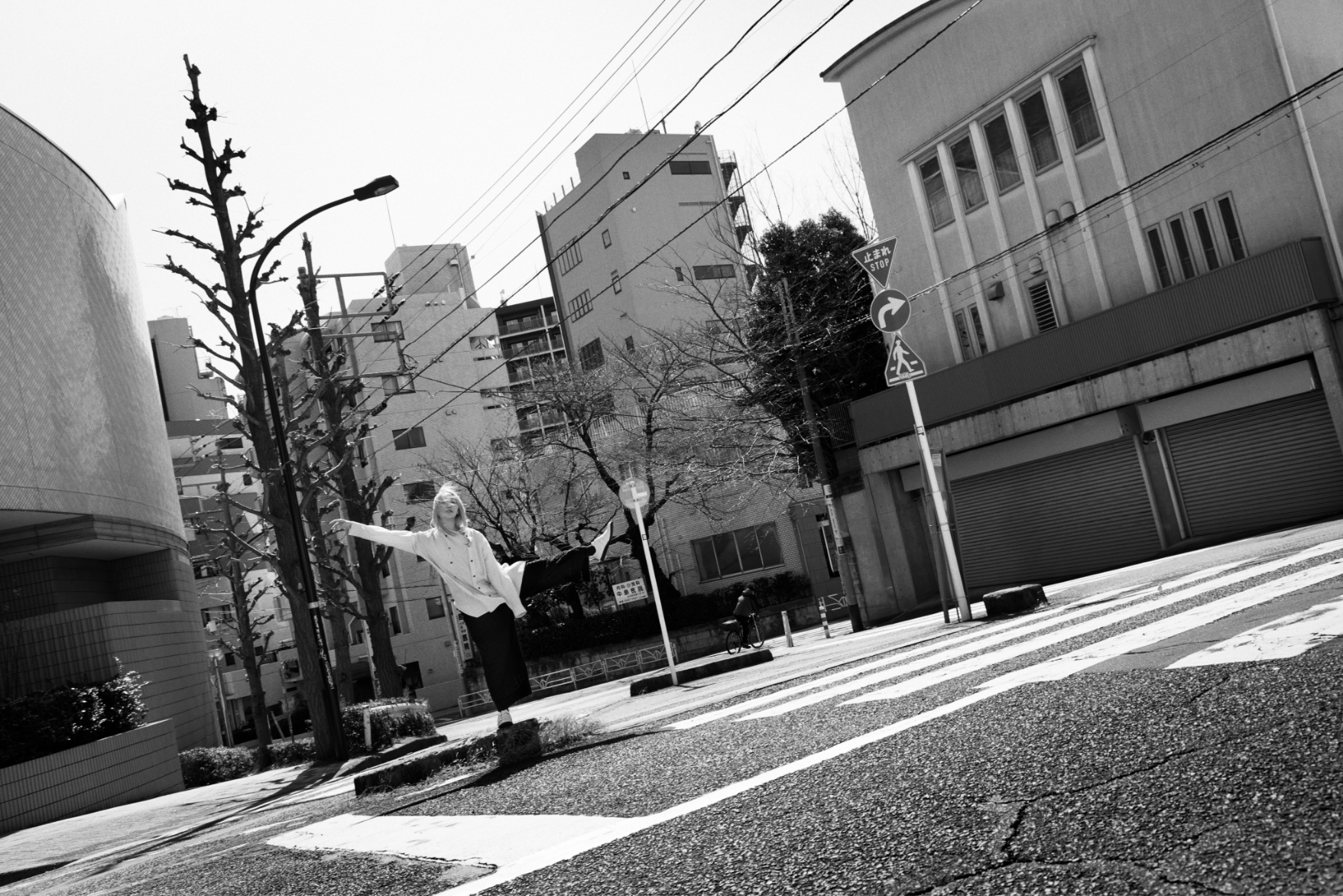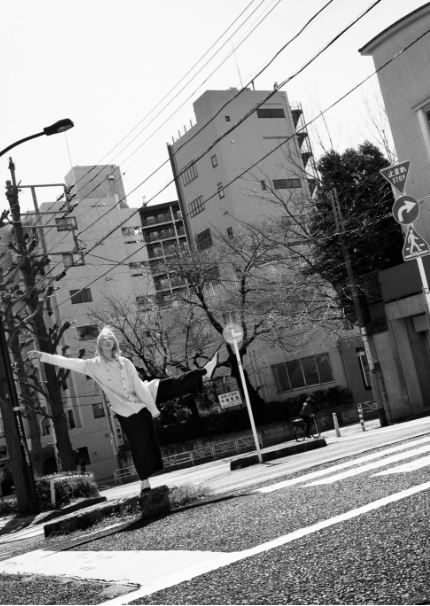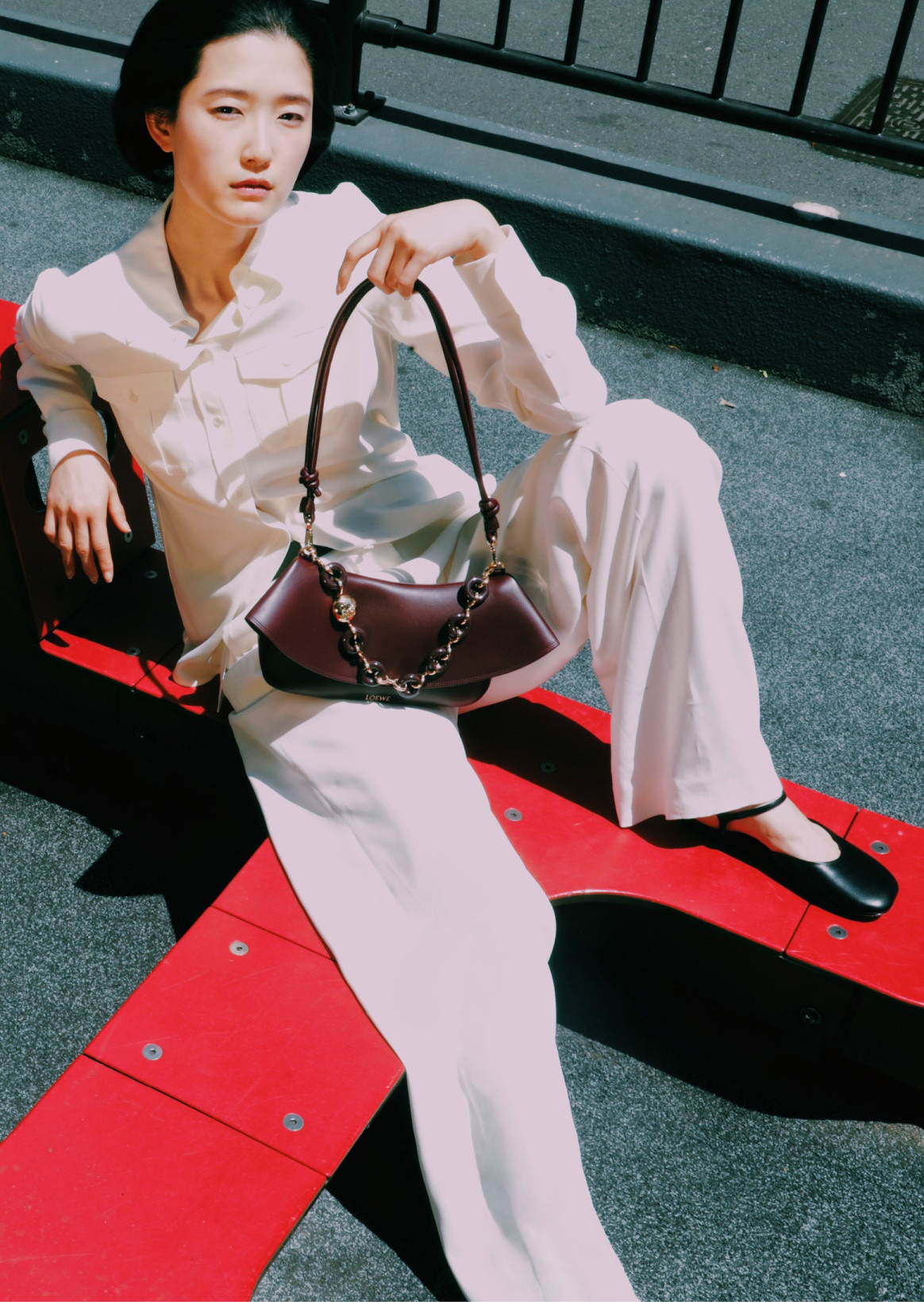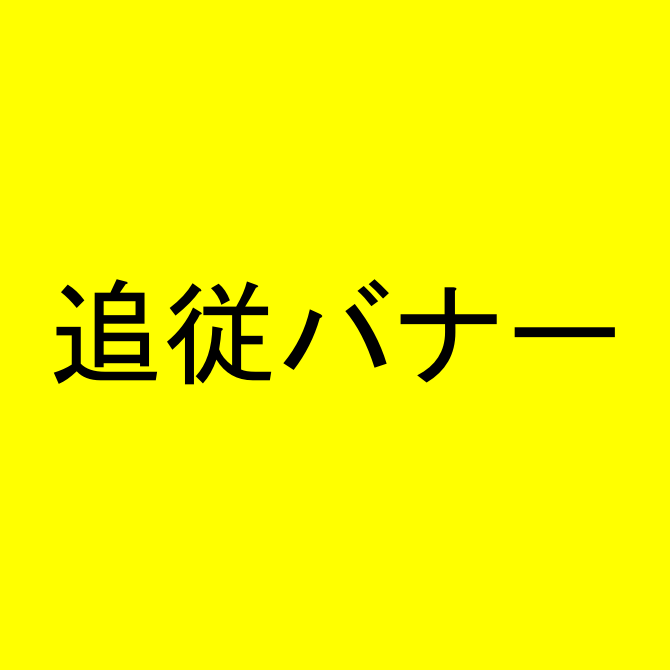- Photo
- Kazumi Kurigami
- Text
- Hirofumi Kurino
- Director
- Sato Takayoshi (OGYA inc)
- Stylist
- Keisuke Baba
- Model
- YACO, Jun Niioka(BARK IN STYLE)
在涩谷这个城市,汇集了继承山本耀司思想的6个品牌。
Y’s、Y’s for men、discord Yohji Yamamoto、LIMI feu、Ground Y、S’YTE。
各自用不同的语言讲述“YOSHIYAMATO DNA”,在涩谷PARCO这个领域形成了一种存在感。
传说中的摄影家操上和美拍摄的是以街道为背景的衣服所酝酿出的寂静和紧张感。
时尚与城市,人与时间交错的瞬间,被他的目光深深烙印着。
栗野宏文从“城市·人·物”的视点,讲述了风景背后的记忆和关系性。
这张照片和语言重叠的记录,是衣服与城市结合时产生的一个“共犯关系”的证明。
Six brands inheriting the philosophy of Yohji Yamamoto are gathering in the city called Shibuya.
Y's, Y's for men, discord Yohji Yamamoto, LIMI feu, Ground Y, S'YTE.
Each expresses the "Yohji Yamamoto DNA" in a different language, together creating a singular presence within the space of Shibuya PARCO.
What legendary photographer Kazumi Kurigami captures is the quiet tension emanating from garments worn against the backdrop of the city. Moments where fashion and the city and where people and time intersect are deeply imprinted in memory through his gaze.
Hirofumi Kurino, meanwhile, speaks from the perspective of "city, people, and things" about the memories and relationships that lie behind those scenes.
This record, in which photographs and words overlap, stands as evidence of a certain "complicity" that arises when clothing connects with the city.
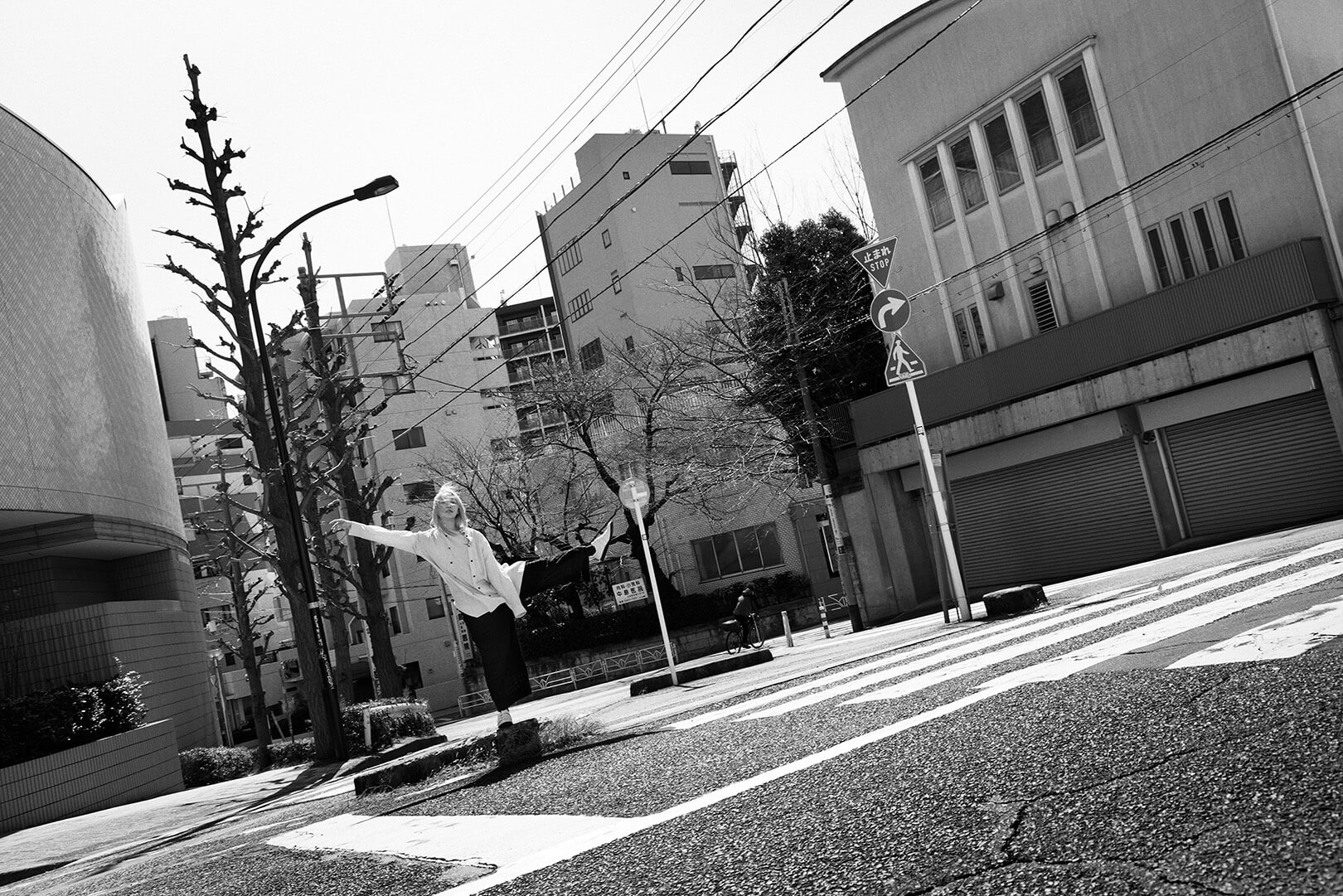 Y’s
Y’s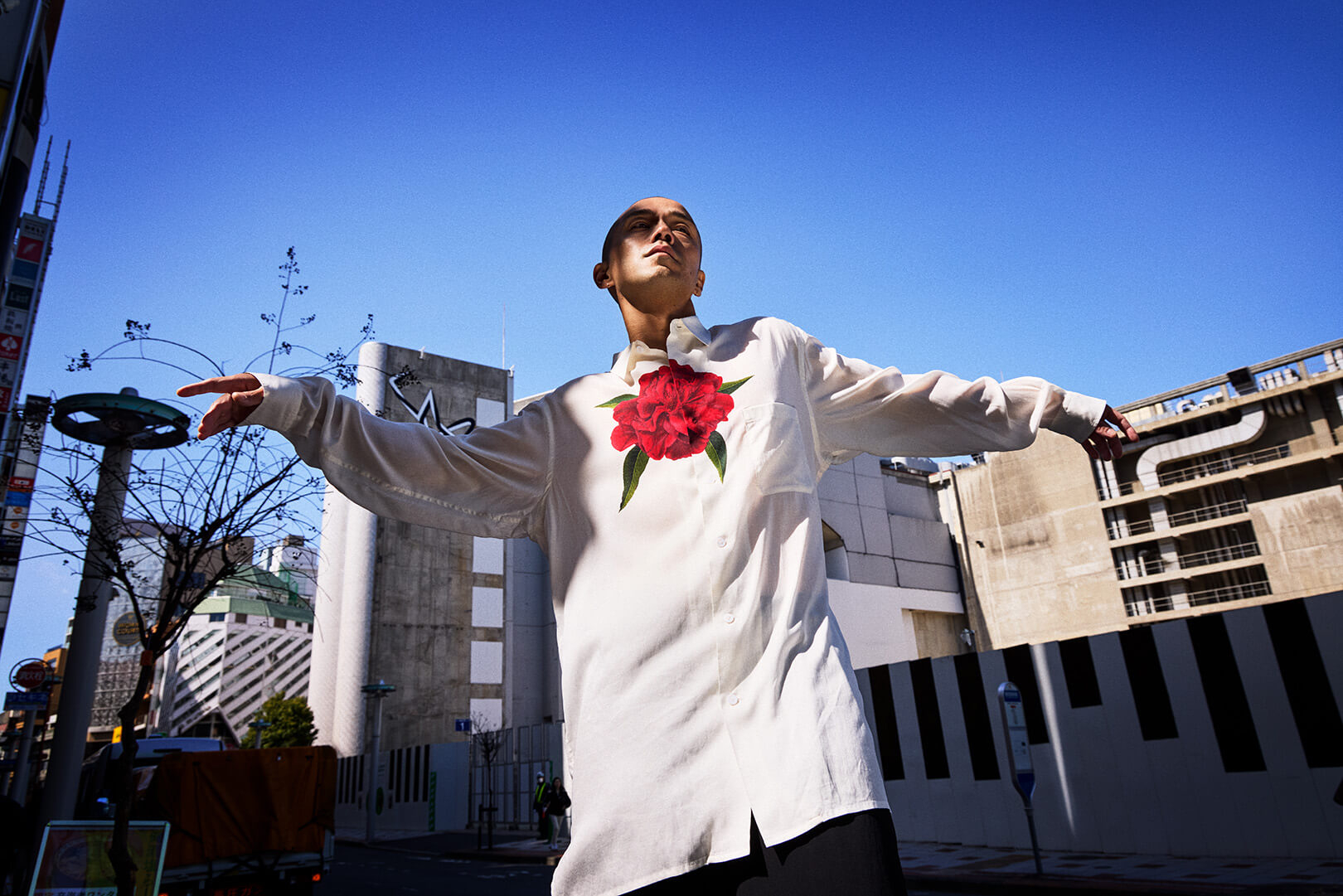 Y’s for men
Y’s for men人・町・物
城市由人来建造。
作为人们聚集、生活、交换事物和想法的场所,“城市”成立了。同时,也可以说“人”也是城市建设的吧。
至少可以说我(栗野宏文70代)是由城市培育出来的。
从个人的内容开始,并不是因为想谈论个人史。但是,我相信说作为‘当事人’的经验在这篇文章中是有效的。
原本我的母亲(1927~2010)是在涩谷出生长大的。母亲是喜欢电影的少女,似乎生活在“听到开始的铃声响了之后离开家也赶上了上映”的区域。这样的母亲经常带着小学生的我去电影院。我自然地学会了乘坐电车的方法和买电影票的方法,10代中期以后一个人开始去涩谷的名画座。
我觉得入场费是300日元。交通费是世田谷线,如果是儿童折扣的话,30日元就可以从下高井到涩谷了。花了很多时间。
不久,我在音乐中醒来,在涩谷买了唱片,当时去了几家摇滚咖啡馆。人与人相遇,这也是城市所发挥的作用。在那里认识的脸在日比谷野外音乐堂(通称Yaon)也能看到,不知什么时候我帮着摇滚音乐会。随意贴着演唱会的海报走着的也是涩谷。我在摇滚咖啡馆打开了英语课本,完成了作业。和想设法把像我这样的淫荡者放进箱子里的学校和教师的距离扩大了,我成为了没有的高中生。城市养育人。
不久,我对西服的兴趣增加了,去城里买衣服。令人在意的衣服的对象是从之前的牛仔裤和T恤开始设计的衣服。当时,卖所谓的“设计师品牌”衣服的是以直营店为中心的地方,就出现了“时尚大厦”的存在。
People, city, and things
A city is made by its people.
A city comes into being as a place where people gather, live, and exchange things and ideas. At the same time, it can also be said that people are made by the city.
At the very least, I (Hirofumi Kurino, in my 70s) can say I was raised by the city.
I don't begin with a personal story in order to share my biography. But I do believe that recounting my experiences as a "participant" is meaningful for this text.
To begin with, my mother (1927–2010) was born and raised in Shibuya. She was a girl who loved movies, and apparently lived in an area where "she could leave the house after hearing the bell signaling the start of a film and still make it to the theater on time." She often took me, an elementary school student, to the cinema. I naturally learned how to ride the train and buy movie tickets, and by my mid-teens I had begun going alone to Shibuya's repertory cinemas.
I believe admission was 300 yen. The train fare was 30 yen with a child's discount on the Setagaya Line, which got me from Shimotakaido to Shibuya. It took quite a bit of time, though.
Soon I became immersed in music, and I began buying records in Shibuya and frequenting rock cafés, of which there were a few at the time. Cities are places where people encounter each other—this is one of the roles they have long played. I began to see the same faces I'd met at those cafés at the Hibiya Open-Air Concert Hall (commonly called "Yaon"), and before I knew it, I was helping out at rock concerts. I pasted concert posters around the city without permission—also in Shibuya. I did my homework at rock cafés, English textbook open. As the distance between myself and teachers or schools trying to force misfits like me into boxes grew, I became a more precocious high school student. Cities shape people.
Eventually I developed an interest in fashion, and I began venturing into the city to buy clothes. My attention shifted from jeans and T-shirts to designer clothing. At that time, so-called "designer brands" were sold mainly in directly operated stores, but then came the rise of "fashion buildings."
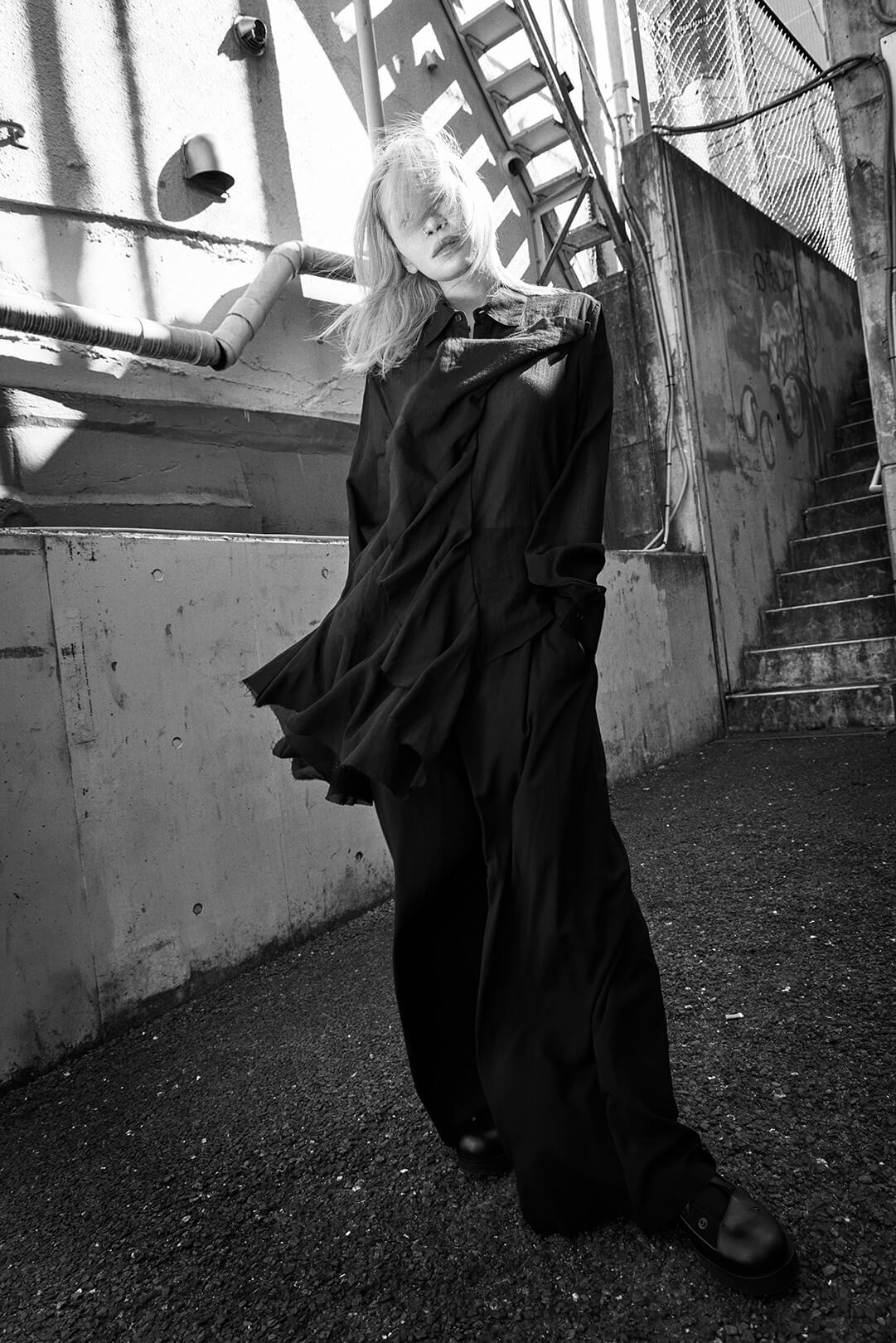 LIMI feu
LIMI feu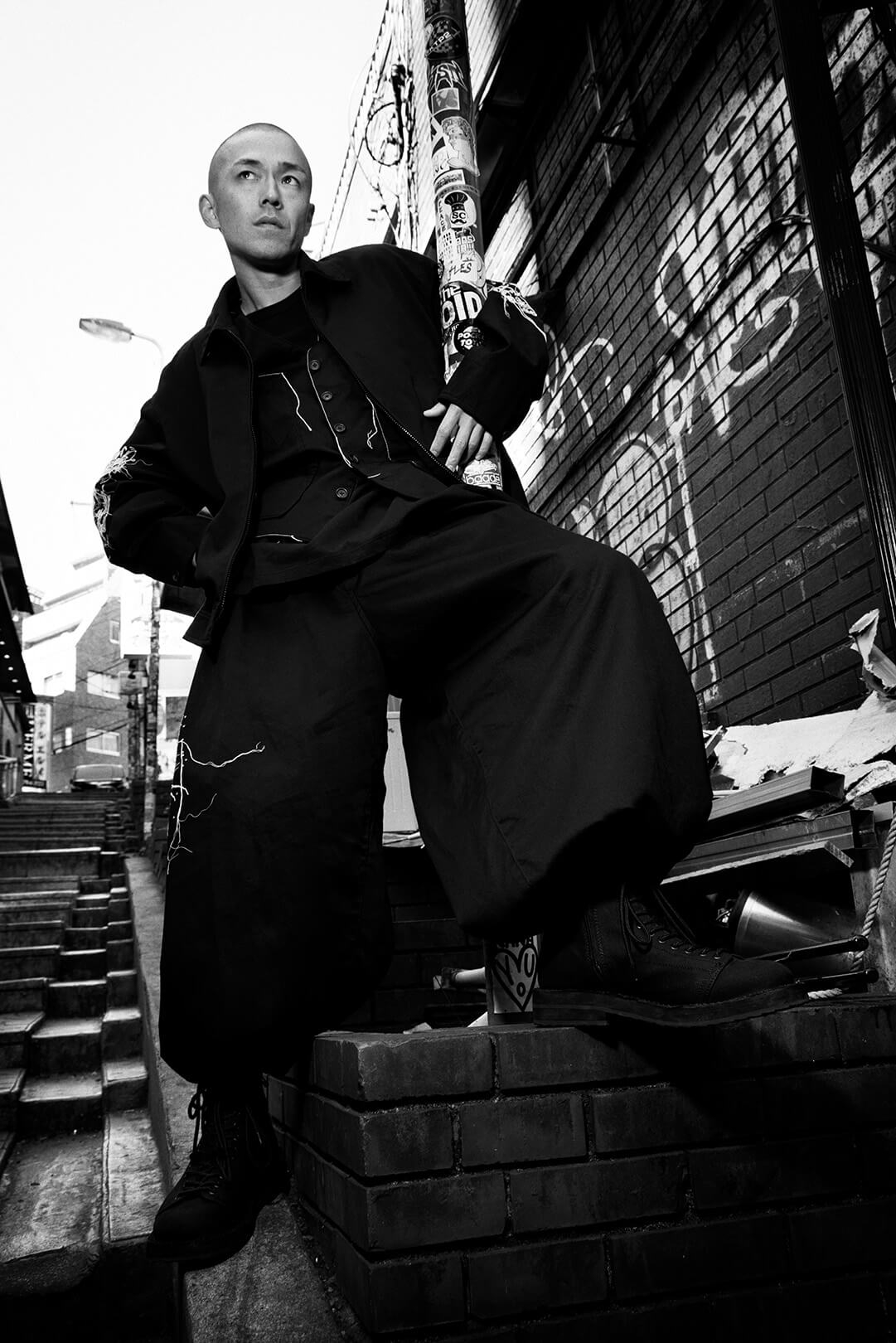 S’YTE
S’YTE时代从70年代过渡到80年代,战败国的日本复兴,走上通往经济大国、消费大国的道路。1973年,我的风格图标是大卫·罗伯特,在涩谷开张的帕尔科,在80年代成为了汇集了设计师品牌的麦加。
山本耀司的收藏品与同时期世界出道的日本设计师品牌有着不同的审美意识。
也许可以说这与西欧传承下来的服装概念是相反的。
如果强调肉体和性元素,或者体现了动手所属的“阶级”的东西是西欧的福音,那么
YOSHIYAMATO的母亲是“包着身体”的母亲。
但是,看起来不高声调自我主张,却散发出确实存在感的“自我”的衣服。
在那里,海外记者和买家将日本风格的罢工主义和已故的品位第一…更重要的是找到了开始。
YOSHIYAMATO被评价为“和”的审美意识和“洋”的时装融合。
虽然没有装饰性,但既简单又无味的“摇摇晃晃”的衣服。或者说“阴影礼赞”的隐秘的官能性被察觉到了。
YOSHIYAMATO的衣服受到欧美演员和艺术家的喜爱,但在欧美不得不置身于西欧社交场合的立场,但对于不想穿荞麦、连衣裙和燕尾服的客人层,他们特别是YOSHIYAMATO的美学产生了深刻的影响。威姆·文达斯和皮娜·鲍什不仅穿着乔治大和乔治大和乔治大和乔治,还将他作为表现者的灵魂注入了那里。
或者,已故的卡罗琳·贝塞特·肯尼迪·肯尼迪的妻子和时尚领袖。她简单地穿着YOSHIYAMATO的样子让我印象深刻。可以说她是元祖奎特·奢侈品,但YOSHIYAMATO的衣服也属于她的上下文。
不仅仅是YOSHIYAMATO,日本设计师的福并不是掩盖或装饰“人”,而是反而能从缠绕中表现出来的存在吗?也就是说,这里的福不是“东西”。我们目不转睛地看着人把事物升华为‘超越事物的存在’的样子。或者说福能使人的魅力(有时本人也不知道)可视化。人虽然养大了母亲,但也养大了母亲。
亲眼目睹这一幕并拍摄成影像的是摄影家。
As the era shifted from the 1970s to the 1980s, Japan, once a defeated nation, recovered and followed the path to become an economic and consumer superpower.In 1973, when my style icon was David Bowie, PARCO opened in Shibuya, and by the 1980s it had become a mecca for designer brands.
Yohji Yamamoto's collections, possessed a different aesthetic than other Japanese designers which debuted on the global stage around the same time.
One could say it stood in stark contrast to the fashion sensibilities inherited in the West.
If Western clothing was about emphasizing the body and sexuality, or manifesting the social class of the wearer,
Yohji Yamamoto's clothing was about "wrapping the body."
Clothing that, while not loudly asserting itself, exuded a firm presence and sense of self.
Foreign journalists, buyers—and above all, the wearers themselves—began to recognize in his garments a uniquely Japanese stoicism and sensuality.
Yohji Yamamoto was seen as a fusion of Japanese aesthetics and Western couture.
The clothes were not decorative, but had a certain "sway" to them that was neither simple nor bland. There was a hidden sensuality to them that was reminiscent of "In Praise of Shadows."
His garments, favored by Western actors and artists, resonated deeply with those who, though compelled to participate in Western social settings, did not wish to wear typical soiree dresses or tuxedos. Wim Wenders and Pina Bausch did not merely wear Yohji Yamamoto; they imbued the garments with their spirit as artists.
Also remembered is the late Carolyn Bessette-Kennedy, wife of John F. Kennedy Jr. and a noted fashion icon. Her simple, elegant way of wearing Yohji Yamamoto remains etched in memory. She could be considered the originator of "quiet luxury," and Yohji Yamamoto’s clothing certainly belongs within that context.
Not limited to Yohji Yamamoto alone, Japanese designer clothing may not be about hiding or adorning a person, but rather about expressing their essence through the act of wearing. That is to say, here, clothing is not simply a "thing." We have witnessed how people elevate garments into something more. At times, clothing can even make visible a person's appeal—something they themselves may not recognize.
People develop clothing, but clothing also develops people.
And it is the photographer who witnesses this and captures it in images.
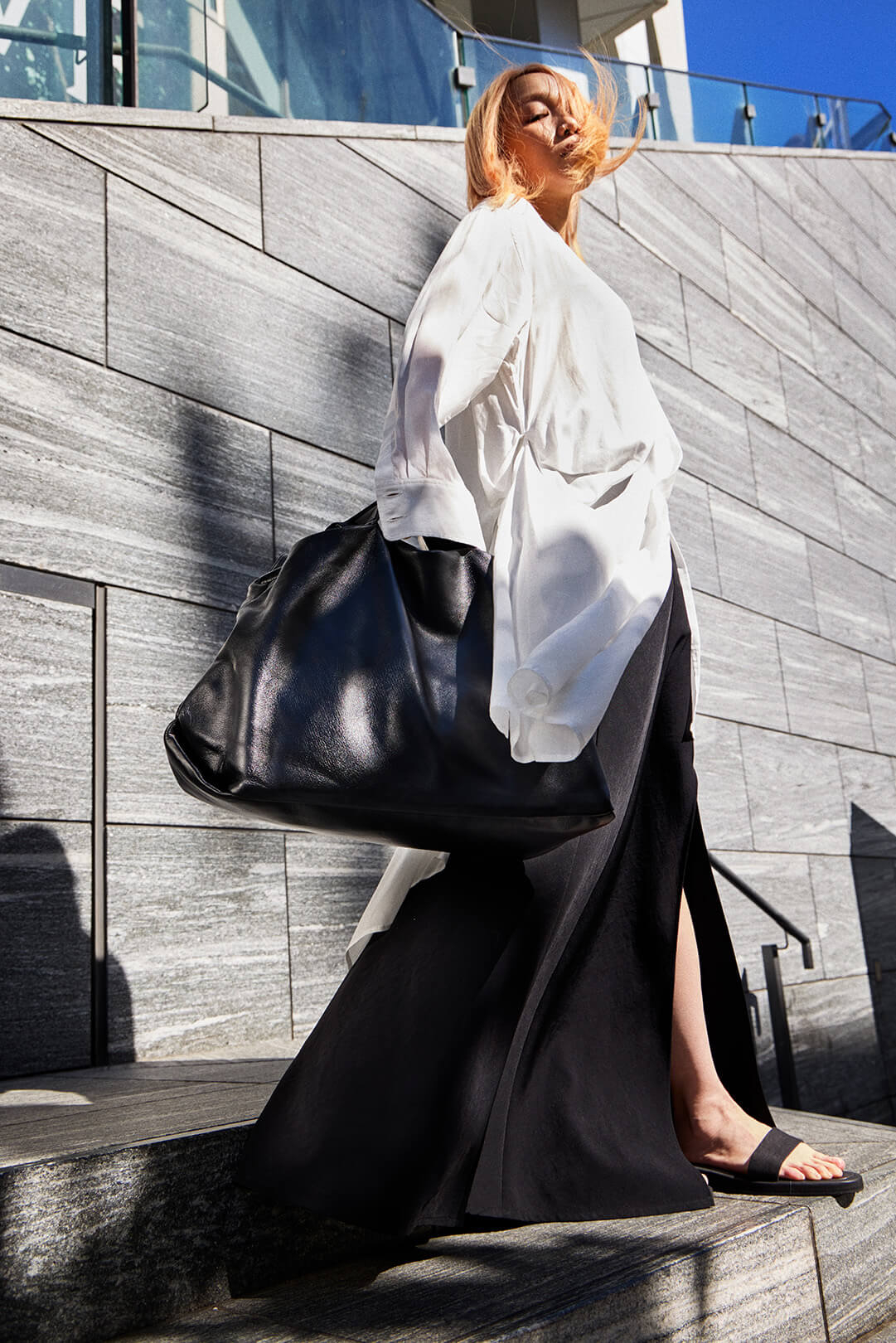 discord Yohji Yamamoto
discord Yohji Yamamoto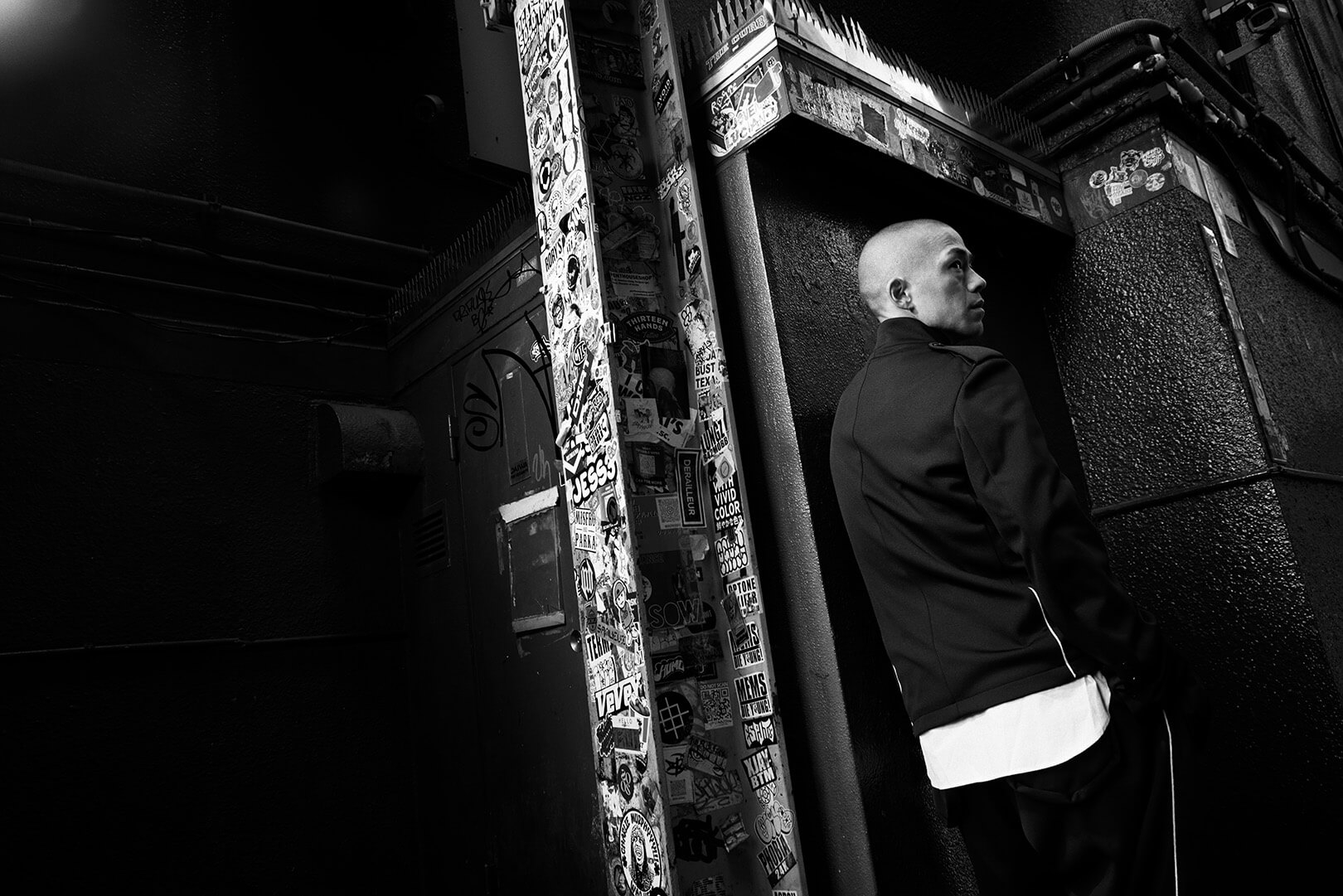 Ground Y
Ground Y